- Home
- Paula Byrne
The Real Jane Austen Page 15
The Real Jane Austen Read online
Page 15
Henry Austen resigned his commission in 1801. It was time to spend more time with his new wife. But he retained his strong connections with the military. Within a month of his resignation, he reappeared in the pay list of the Oxfordshire Regiment of the Militia, in a new role: ‘Agent: H. T. Austen and Co.’25 Together with Henry Maunde, another ex-officer, he had set himself up as a banker. Their first lucrative account was the handling of the regiment’s payroll. They also made a secret agreement with a certain Charles James ‘to profit from speculation in army commission brokerage and in the agency of half pay’.26 James had held captaincies in two different militias. He was at this time working on a Military Dictionary, which was completed the following year and would go through many editions. It was published by Thomas Egerton, ‘Bookseller to the Ordnance, Military Library, near Whitehall’.27
The most enduring publication of Egerton’s Military Library
This was the surprising connection that got Jane Austen into print for the first time. Few modern readers are aware that Sense and Sensibility and its successor Pride and Prejudice, among the most beloved works of romantic fiction in the English language, originally bore title pages announcing the publisher as ‘T. Egerton, Military Library, Whitehall’.
Henry and Eliza moved to a new house in the fashionable London location of Upper Berkeley Street. They invested in over three thousand pounds’ worth of ‘5% Stock’ – the equivalent of about two hundred thousand pounds ($300,000) in today’s terms. The six-monthly dividends provided them with a stable income. The banking business, meanwhile, was highly speculative. Promissory notes were written at will and large sums were advanced to people with very questionable credit records, including £6,000 to the notorious spendthrift Lord Moira. He never repaid the bank loan. Given the volatility of the credit market, the agency for army payroll provided some much needed stability – though it also meant that when the war came to an end and a huge part of the army was discharged or put on to half-pay, the handling fees plummeted. This would be a major cause of the collapse of the bank. In March 1816, Henry would be declared bankrupt.
Eliza was a remarkable person and a good mother. When her son Hastings died in 1801, the last link to Jean-François,28 she refused platitudes from her cousin Phylly that his death must have been a ‘desirable relief’. ‘So awful a dissolution of a near and tender tie must ever be a severe shock,’ she replied.29 Jane was deeply moved at the loss. She continued to adore her ‘outlandish cousin’, who was now also her sister.
She visited the Henry Austens in London where they lived ‘quite in style’ with a French chef. As will be seen, they fostered her love of the theatre. After her own father’s death, Jane took it upon herself to send Eliza a mourning brooch. She also retained special fondness for Eliza’s housekeeper, a French émigrée called Madame Bigeon.
On one memorable occasion, when she was on the brink of becoming a professional author, Jane stayed with Henry and Eliza. In her long struggle to get published, it was Henry’s connections with Thomas Egerton’s Military Library that provided her breakthrough. Some pressure from the banker was enough to persuade Egerton, more used to publishing such volumes as The Royal Military Chronicle and James’s Military Dictionary, to take on Sense and Sensibility.30
Jane was in town to correct proofs for Egerton when she wrote to Cassandra with details of a fabulous party that Eliza had thrown for eighty people. In preparation Jane and Eliza had walked into London to buy chimney lights. Jane was excited by the musical entertainment: ‘5 professionals, 3 of them Glee-singers … One of the Hirelings, is a Capital on the Harp, from which I expect great pleasure.’31 She later described the cut flowers and the elegance of the company: ‘I was quite surrounded by acquaintance, especially Gentlemen.’32
On another occasion, she accompanied sister-in-law Eliza on a visit to the Comte d’Antraigues and his wife, an opera singer. Jane liked them apart from their habit of ‘taking quantities of snuff’. She reported that ‘Monsieur the old Count, is a very fine looking man, with quiet manners, good enough for an Englishman.’33 A year later, the Count and his wife were stabbed to death in a brutal murder by an Italian servant, who then committed suicide. There were rumours that this murder had a political motive.
It must have been gratifying that Eliza saw her clever cousin in print, having done so much to encourage her as a child. But by the spring of 1812, just as Sense and Sensibility received its first reviews, Eliza was ill, probably with breast cancer. She endured a long and painful illness, and Jane was asked to come up from Hampshire to be with her in her last days. She died in April 1813, two months after the publication of Pride and Prejudice. Jane stayed with Henry that September, sleeping in Eliza’s bed.
Eliza was a muse for Jane Austen and it has often been suggested that, as well as dedicating the youthful story ‘Love and Freindship’ to her, Jane used details of her vivacious cousin for two of her fictional characters: the fascinating widow Lady Susan, and Mary Crawford in Mansfield Park, the novel that she was working on in the last year of Eliza’s life. Jane Austen was adept at drawing femmes fatales such as these. Both characters are spirited, irreverent, charming and amoral. They resist marriage as an infringement of their liberty. Like the real Eliza, the fictional Mary plays the harp, is elegant and fashionable, adores London, laces her vocabulary with French phrases, is witty, loves amateur dramatics and enchants every man she meets. It is unlikely that Jane Austen could have drawn an anti-heroine so beguiling as Mary Crawford without her cousin Eliza.
And then there is their disdain for clergymen. After her death Henry entered the Church, something that would have been most unlikely while Eliza was alive. This third and final career began in December 1816, when he took orders at Winchester or Salisbury. Jane lived long enough to hear him preach at the village church in Chawton. She had always considered him an eloquent speaker. Jane’s favourite brother and the member of the family who had had the most influence in furthering her literary ambitions was in constant attendance throughout the final two months of her illness in 1817. Henry, Cassandra and the mysterious housekeeper Madame Bigeon were the only names mentioned in Jane Austen’s will. But of all the surprising connections in her life, few are greater than that which led, by a crooked path, from Henry’s donning of the cocked hat of the Oxfordshires to the publication of Pride and Prejudice in Egerton’s Military Library.
8
The Theatrical Scenes
The auction for the sale of the contents of Steventon parsonage took place on the premises, conducted by Mr Stroud of Newbury. Advertisements had appeared in the local papers. The one illustrated here is from the Reading Mercury, the newspaper read by the Austen family. The sale was scheduled to last for three days, commencing at eleven o’clock each morning, from Tuesday 5 May 1801. The Reverend George Austen had announced that he was going to retire and that the family would be moving to rented premises in the city of Bath. Jane Austen, now aged twenty-five, would have to say goodbye to the family home. Apart from her time at boarding school and those visits to relations, she had lived in the parsonage at Steventon since the day when she was born.
For all its prosaic dreariness, the sale advertisement is a curiously moving testament to all that she was losing. Her father’s nearly new carriage is there, the greater part of his library, all the household goods and even the livestock from his smallholding: ‘The neat HOUSEHOLD FURNITURE, well made Chariot (with box to take off) and Harness, 200 volumes of Books, Stump of Hay, Fowling Pieces, three Norman Cows and Calves, one Horse, and other Effects.’ The loss of the books would have been a particular blow to Jane. And among the ‘four-post and field bed-steads, with dimity, moreen and other furnitures, fine feather beds and bedding, mattresses, pier and dressing glasses’ would have been her own bed and the mirror in front of which she dressed. The table at which the family dined was there, the mahogany sideboard and the Wedgwood crockery, the card table at which they played. Also Jane’s pianoforte in its ‘handsome case (by Ganer
)’, her music, the huge six-doored bookcase from her father’s library, and finally, presumably from the barn, ‘13 ironbound casks, an end of hops, set of theatrical scenes etc. etc.’.
A set of theatrical scenes. Years before, young James Austen had composed a ‘Prologue to the Tragedy of Matilda, acted at Steventon Hants. Spoken by Edward Austen’:
When Thespis first professed the mimic art,
Rude were his Actors, and his stage a cart;
No scene gay painted, to the eye displayed
The waving honours of the sylvan glade.1
The scenes in the barn, what would now be called flats, perhaps ‘gay painted’, are a reminder of the family theatricals of Jane Austen’s youth. James, who was to take over the parish and the rectory, had clearly put such childish things away. His days as stage manager, director, writer and actor were over now that he was ordained as a clergyman.2
The ‘set of theatrical scenes’ suggests the attention to detail and the high ambition of the Steventon theatricals. Jane Austen’s first-hand knowledge of the art of amateur dramatics enabled her to create her vivid and compelling account of private theatricals in Mansfield Park. ‘A love of the theatre is so general,’ she writes in that novel.3 Jane Austen loved Shakespeare, and spoke of him as running through our veins, ‘a part of an Englishman’s constitution’ with whom we are ‘intimate by instinct’.4 She was a supporter of the public theatres, in London and also in the provinces, at Bath and Southampton. Her taste was eclectic; she enjoyed farces, musical comedy and pantomimes considered to be ‘low’ drama, as much as she enjoyed Shakespeare and the leading contemporary comic dramatists such as George Colman and David Garrick.5
From an early age, Jane Austen showed her awareness of what the newspapers called ‘the Theatrical Ton’ – the fashion for private theatricals – that obsessed genteel British society in the late Georgian era. In a short story dating from 1792, she has one of her characters demand a purpose-built theatre as part of her marriage settlement.6 Here, she is satirizing the extreme end of the craze, whereby members of the gentrified classes and the aristocracy built their own scaled-down imitations of the London playhouses. The most famous was that erected in the 1770s at Wargrave in Berkshire by the spendthrift Earl of Barrymore, at a reputed cost of £60,000. It seated seven hundred people.
In Mansfield Park the public interest in aristocratic private theatricals is regarded ironically: ‘To be so near happiness, so near fame, so near the long paragraph in praise of the private theatricals at Ecclesford, the seat of the Right Hon. Lord Ravenshaw, in Cornwall, which would of course have immortalized the whole party for a least a twelvemonth.’7 Jane Austen carefully distinguishes between the fashionable elite theatricals of the aristocracy, which were mercilessly lampooned by the press, and the more modest efforts of the gentry. Despite Tom Bertram’s best efforts to professionalize his theatre, the young people at Mansfield Park fall back on the measure of converting a large room of the family home for the production of Lovers’ Vows. This is one of Jane Austen’s private family jokes, as this is exactly what the Austens did when they first began to put on plays at Steventon.
Jane Austen was only seven when the first play was performed in the dining room of the rectory at Steventon. Later on, the Austens used the family barn, which is no doubt why the theatrical scenes were still there at the time of the 1801 sale. The theatricals at Steventon were not solely a family affair. The Cooper cousins and some local friends, the Digweeds, helped to make up numbers, while George Austen’s pupils joined in. Tom Fowle, who was to become engaged to Cassandra, was part of the Steventon theatricals and spoke the epilogue to Matilda. It helped that George Austen always encouraged his pupils in the art and practice of good reading aloud.
James and Henry Austen, the clever boys of the family, were the ringleaders. James, who fancied himself as a writer and poet, wrote his own prologues and epilogues. They survive, so we know several of the plays that were performed at Steventon. After the tragedy of Matilda, Sheridan’s hilarious comedy The Rivals was performed ‘by some young Ladies and Gentlemen at Steventon’ in July 1784. By the time that the Austens had converted the barn into a theatre they were performing The Wonder: A Woman Keeps a Secret, by Susanna Centlivre, one of the finest dramatists of the early eighteenth century, and The Chances, an adaptation by the great David Garrick of a comedy that ultimately went back to Shakespeare’s collaborator John Fletcher. Jane Austen’s cousin Phylly Walter wrote: ‘My uncle’s barn is fitting up quite like a theatre, and all the young folks are to take their part.’8 Eliza de Feuillide egged on her cousins. She also tried to persuade shy Phylly to take part in the Steventon theatricals: ‘You know we have long projected acting this Christmas at Hampshire … on finding there were two unengaged parts I immediately thought of you.’ She told Phylly that she need not worry about costumes: ‘Do not let your dress neither disturb you, as I think I can manage it so that the Green Room should provide you with what is necessary for acting.’9 She sounds just like Mary Crawford twisting the arm of the shy Fanny Price into participating in Lovers’ Vows.
Mrs Austen was very keen on the young people taking part in the acting scheme, and was irritated when Phylly reported back that she was reluctant about ‘appearing in public’. Eliza wrote to tell Phylly to ‘bring yourself to act, for my Aunt Austen declares “she has not room for any idle young people”’. Eliza was convinced that it was interfering Aunt Walter who prevented her daughter from joining in the theatricals: ‘The insuperable objection to my proposal is, some scruples of your Mother’s about your acting – If this is the case I can only say it is [a] Pity so groundless a prejudice should be harboured in so enlightened [and so] enlarged a mind.’10
The theatricals seemed to be a Christmas event. During 1787–9 the Steventon company performed a wide variety of comedies: The Wonder, Bon Ton, The Chances, The Tragedy of Tom Thumb, The Sultan and High Life below Stairs. Eliza took on the female leading roles and flirted outrageously with her cousins, James and Henry. James, home from his foreign travels, wrote a prologue and epilogue for The Wonder. Eliza played the spirited heroine, Donna Violante, who risks her own marriage and reputation by choosing to protect her friend Donna Isabella from an arranged marriage to a man she despises. The play engages in the battle-of-the-sexes debate that Eliza and the Austens particularly enjoyed. Women are ‘inslaved’ to ‘tyrant men’.11 Whether they be fathers, husbands or brothers, men ‘usurp authority and expect a blind obedience from us, so that maids, wives, or widows, we are little better than slaves’.12 The play’s most striking feature is a saucy proposal of marriage from Isabella, though made on her behalf by Violante in disguise, to a man she barely knows: an anticipation of Lovers’ Vows, with its daring proposal from a vivacious young woman. In the New Year, The Wonder was followed up by Garrick’s The Chances, a racy comedy depicting jealous lovers, secret marriages and confused identities. It is likely that Eliza played the role of the low-born ‘second Constantia’, a favourite of the great comic actress Dora Jordan. The flirtation, the battle-of-thesexes banter and the intimacy between cousins are later recreated in the Mansfield theatricals: all observed by the rather envious outsider, Fanny Price.
We know from the vellum notebooks that young Jane was writing short playlets, which may well have been performed as afterpieces to the main plays. The part of the diminutive hero Tom Thumb in Fielding’s outrageous burlesque was often played by a child, whose high-pitched voice added to the comic incongruity of the valiant hero – it is tempting to think that either she or little Charles took on the role.
Jane Austen’s intimate knowledge of the drama is evident in her habit of repeating key phrases from plays, often those considered for performance at Steventon. Twenty years after Hannah Cowley’s popular Which is the Man? was considered and then rejected for performance, Jane was still quoting one of its catchphrases, ‘tell him what you will’. She also loved to quote from Cowley’s other hit comedy, The Belle’s Stratagem: ‘Mr Doricourt has t
ravelled; he knows best.’13
The Steventon theatricals took place between 1782 and 1790, coinciding with the period in which Jane Austen’s earliest literary works were written. It is sometimes assumed that she turned against amateur theatricals when she grew older. But this is not the case. When she was well into her thirties, she ‘drew the character of Mrs Candour in Sheridan’s School for Scandal’. She ‘assumed the part with great spirit’.14 This was the recollection of Sir William Heathcote of Hursley Park, Hampshire, after he was invited to a Twelfth Night party. Mrs Candour is a witty gossip-monger who professes she can never speak ill of a friend, and then spreads idle gossip with enormous relish. This party was either at Manydown, home of the Austens’ friends the Bigg-Withers, or in the big house at Chawton.
There was an intimate relationship between the comic novel and the comic theatre. Henry in his biographical notice remarked on his sister’s ‘gifts of the comic muse’. She was from an age when reading novels and plays aloud was an essential part of social recreation and entertainment. One of her nieces remembered her aunt reading a comic part from Fanny Burney’s Evelina and said ‘it was almost like being at a play’. The Edward Austens held an annual celebration at the climax of the Christmas season, with masquerades, dressing up and private theatricals. In contrast to his brother James, who sold off the theatrical scenes and gave up his love of theatre, Edward and his large family loved to act. His eldest daughter, Fanny, recorded a Twelfth Night party in 1806, in what was then the family home at Godmersham in Kent. There was a masquerade in which Fanny and her brother Edward were the Shepherd King and Queen, her mother was a Savoyarde, Miss Sharp a witch, Henry Austen a Jew and another uncle cross-dressed as a Jewess. There were parts for all of the children, except baby Louisa. Little Charles was a cupid, with a ‘little pair of wings and a bow and arrow’. They paraded into the library which was lit up with ‘a throne and a grove of Orange trees’.15

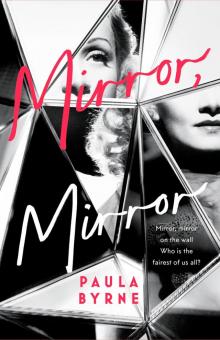 Mirror, Mirror
Mirror, Mirror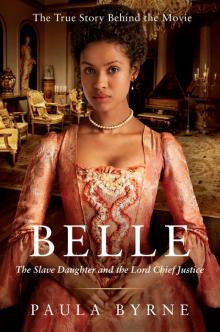 Belle
Belle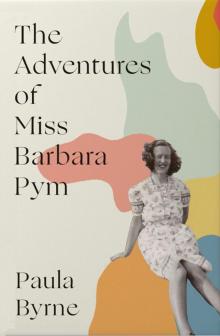 The Adventures of Miss Barbara Pym
The Adventures of Miss Barbara Pym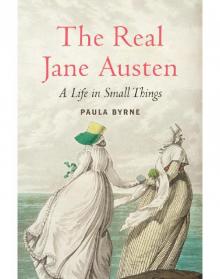 The Real Jane Austen
The Real Jane Austen Look to Your Wife
Look to Your Wife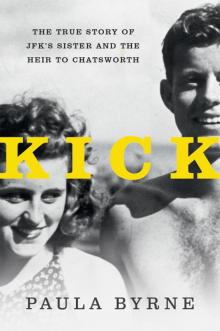 Kick
Kick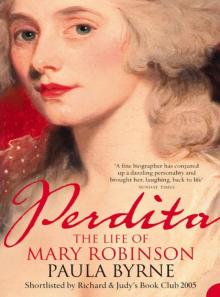 Perdita
Perdita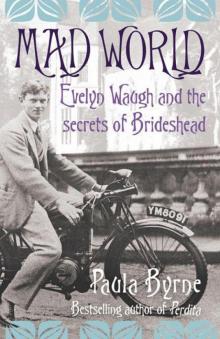 Mad World: Evelyn Waugh and the Secrets of Brideshead (TEXT ONLY)
Mad World: Evelyn Waugh and the Secrets of Brideshead (TEXT ONLY)